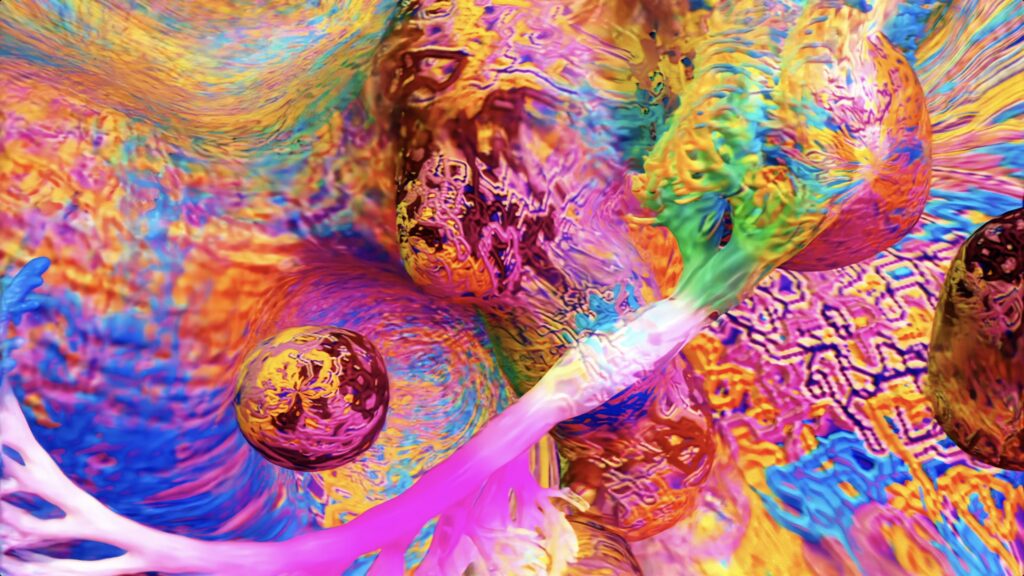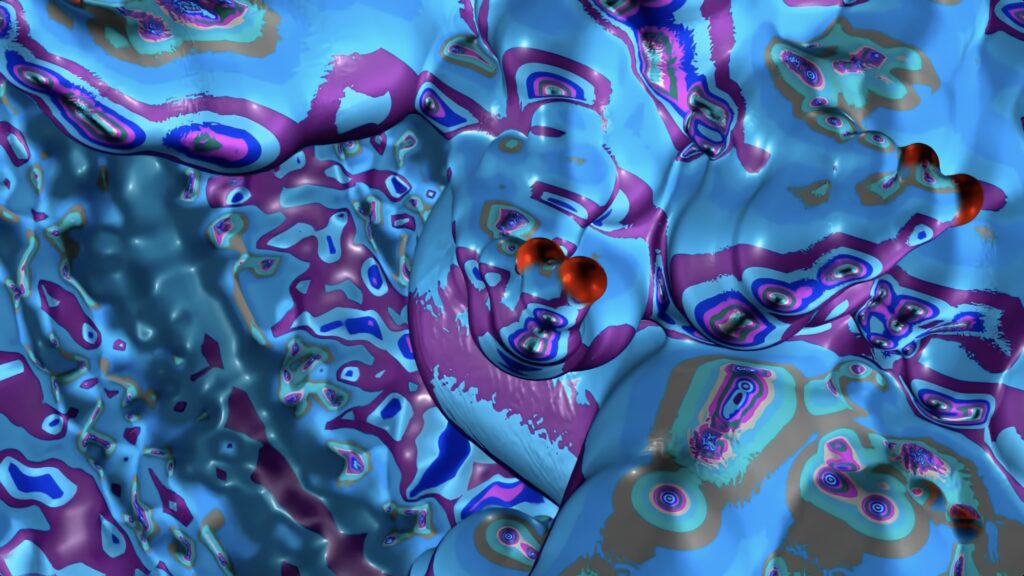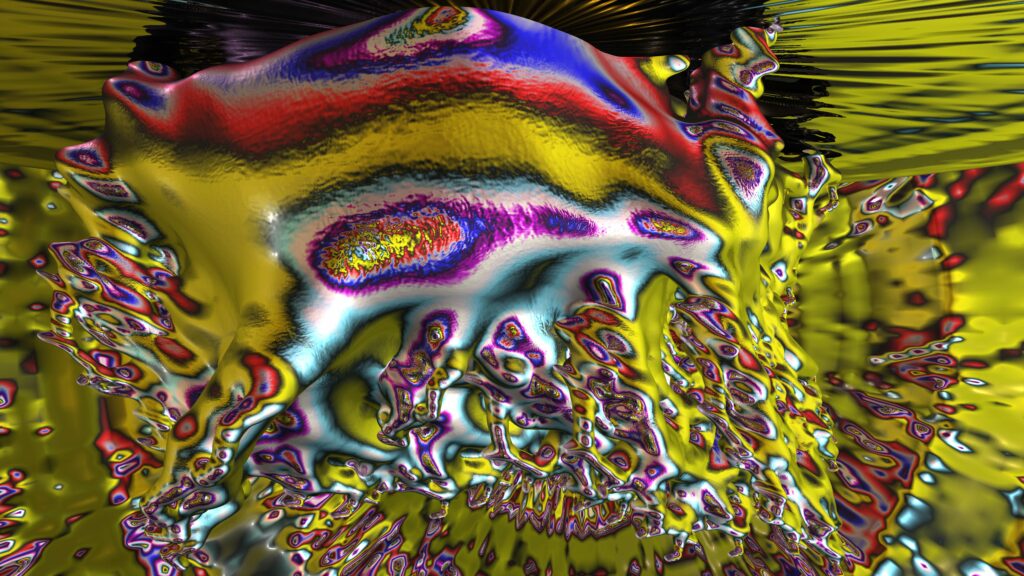Event
Yoichiro Kawaguchi | Zero Gravity Evolution
Zero Gravity Evolution is an exhibition by the Japanese artist Yoichiro Kawaguchi, a leading exponent of that field of artistic research that, between the 1960s and 1990s, systematically probed the potential of computer image generation, thus experimenting with the possibilities of producing beautiful or interesting forms from formalised systems of rules.

Zero Gravity Evolution immerses the visitor in the almost organic lightness of this representation and is an exhibition designed “in progress”. Each month, the public can enjoy different works by the artist in the Immersive Room.
Xenion (2003) aims to reach high levels in the creation of artificial life forms using computer simulation of liquid metal. The work shows the inner universe of a living body in continuous transformation. With Nebular (2000), the artist plunges into the deep universe, deep space, where matter and antimatter struggle. Finally, Poisoned Bergy (2008) is a pioneering work produced in 8K. The image, expressed in yellow and black, is that of a poisonous glacier. It is a work that challenges the expressive limits of “growth models” for artistic expression.

Kawaguchi’s worlds are inspired by nature and created through generative art algorithms. From one form others are generated in a game of metamorphosis and continuous evolution of expressions and colours. Kawaguchi’s nature is made up of dreamlike, ancestral elements and in this very much reflects Japanese culture, where the relationship with technology is neither foreign nor hostile. The forms of nature based, for example, on spirals and ramifications are generated not through the use of object data calculated through measurements, but through the use of an algorithmic structure based on the laws of nature. Although a myriad of forms exist in nature, they are represented on the basis of a common principle, which can be expressed with the same mathematical expressions. Moreover, Kawaguchi’s artistic research stands alongside scientific research, in the sense that it is directed – like that of other digital artists such as William Latham and Karl Sims – at probing the aesthetic aspects of digital biomorphism. If science uses simulations to learn about the mechanisms of life, investigating the most minute relationships between growth processes and the determination of natural forms, Kawaguchi systematically seeks to exploit algorithmic procedures to generate morphogenetic processes with an aesthetic quality. Like science, his research has also undergone an evolutionary process over time, moving from very simple software to increasingly complex ones.

“With digital technology it is possible to see images that could not be realised with standard technology, such as the appearance and growth of the increasingly dense space of a curved surface. With synthetic-digital images, it will be possible to pursue interesting ideas in both moving and still images. The ease of moving without limits between still and moving images will allow one to constantly renew one’s personal inspiration. One can choose to express a feeling of substance by paying attention to the smallest details of form and colour in a still image or to express variation and change by focusing on the rhythm of movement on the time axis in moving images. Personally, I would like to be able to physically perceive the ever-fresh images that will be possible through new high-definition computer graphics research. I want to describe subtropical warm water as a purified object that exists in a realm of overflowing brilliance”.
Yoichiro Kawaguchi
In this sense, it can be said that Kawaguchi’s work is essentially mimetic. It does not aim to imitate the appearance of the world of our experience according to conventional representational models, but imitates nature by emulating its principles and laws of operation. Not unlike the experiences of much contemporary ‘abstract’ and experimental art, it pursues a path directed at capturing aspects of physical reality through artistic research.
***
Zero Gravity Evolution
23 November 2023 to 28 January 2024
MEET is open Tuesday to Sunday, 3 p.m. to 7 p.m.
